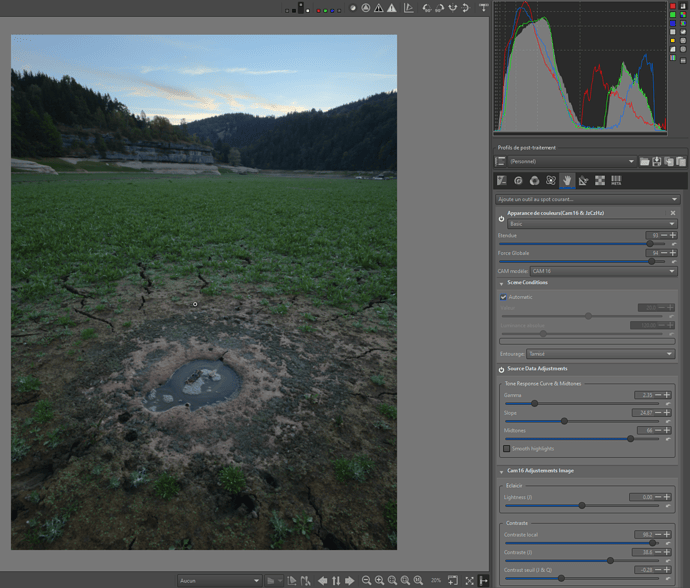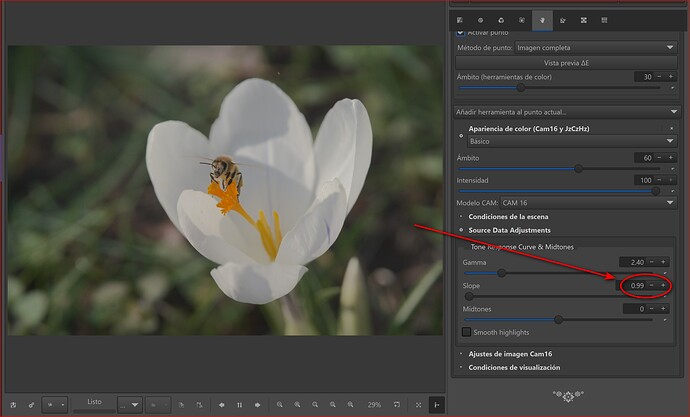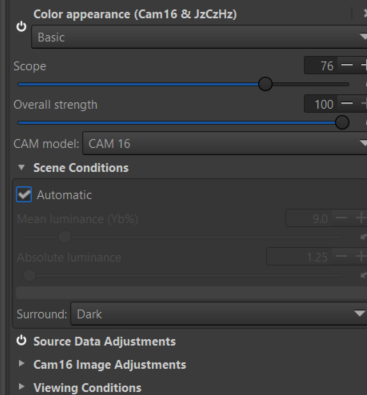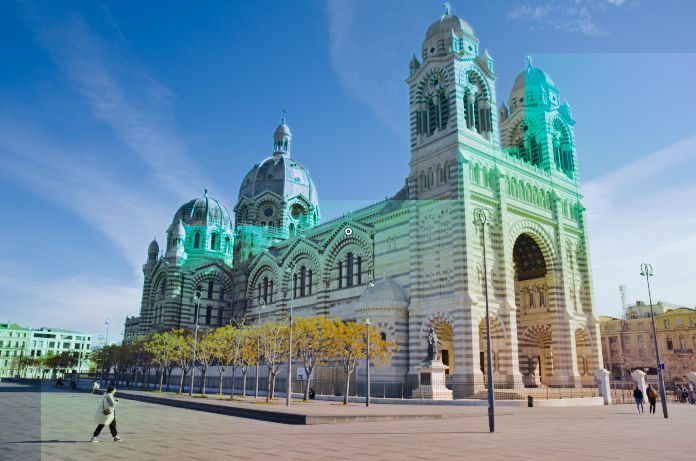Hello
I’ve just made a series of changes to the “lacam16n” branch. They are of 2 types.
Techniques:
- As I’ve said several times, Ciecam is very powerful in colorimetry (I won’t go into detail about its features, which are explained in several posts and tutorials), but it’s very difficult to integrate complex “external” functions into the 6 variables used (Lightness, Brighness, Saturation, Chroma, Colorfullness, hue).
- That’s why the “Source Data Adjustments” module was added - with global processes, located before Ciecam. These included: Log encoding (RGB), Tone Response Curve & Midtones, Primaries & Illuminants.
- In the middle of the Ciecam code, I managed to set up a call to 2 functions familiar to users, but which have the particularity of using only the Q (Brightness) variable, instead of RGB :
** “Log encoding Q”, which - compared to its “brother” in RGB mode - will require more attention to settings, but will be more respectful of colorimetry overall.
** “Sigmoid Q” , which isn’t aimed at processing high-DR images, but rather at making them easier to use than curves and sliders.
User interface (GUI);
In “Basic” mode, the aim is to provide the simplest possible interface, with the minimum number of settings to resolve 90% of the most common cases.
Advanced" mode, on the other hand, offers full functionality, but with numerous settings and a less-than-readable interface. You can’t have everything.
In summary, the “Basic” mode:
- “Scene conditions” is reduced to 2 to 4 settings, with “automatic” mode by default.
- “Source Data Adjustments” includes only “Tone Response Curves & Midtones”. This module, combined with “Surround” (scene conditions), handles 95% of difficult images (high DR, deep shadows, etc.).
- “Cam16 Image Adjustments” includes only the bare essentials: Lightness (J), Local Contrast, Contrast (J), Saturation (s), Red & Skin tones protection.
As you can see, there’s no “Log encoding”, no adjustment of Ev (Black , Whites,…), no Sigmoid, no Graduated Filter, no masks, and so on.
Of course, if you select “Standard” and a fortiori “Advanced”, you’ll have access to more and more settings and algorithms.
I’d like this module to be validated by users before being merged into the current application (Dev). This will be the subject of a processing challenge, which I’ll present shortly.
Thanks in advance.
Executables:
https://github.com/Beep6581/RawTherapee/releases/tag/pre-dev-github-actions
Jacques






